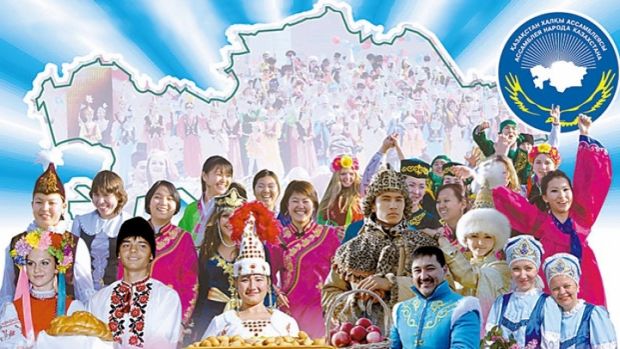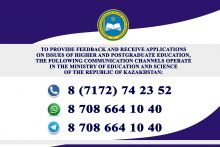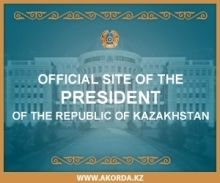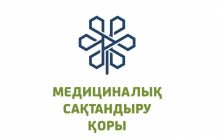Strength - in unity

The
main wealth of our country is the unique diversity of interethnic relations.
Here, in peace and harmony, under one common roof, there are Kazakhs and
Tatars, Russians and Ukrainians, Belarusians and Germans, and many others -
altogether more than 120 different ethnic groups. Someone will say that this is
a miracle, because in Kazakhstan, unlike other post-Soviet countries, ethnic
conflicts were avoided. However, we will say that there is nothing wonderful
here: at all times, our country with respect and friendliness hosted guests,
refugees and immigrants, gave them food and shelter.
Kazakhstan has developed a special tradition of relations between peoples for a very long time. The world began to talk about the existence of a Kazakh model of inter-ethnic harmony. It is based on the tolerance and tolerant attitude of the Kazakhs to all ethnic diasporas, who found themselves in the territory of our common homeland by fate. Thus, a significant part of the Slav population came to Kazakhstan during the mass resettlement of peasants from the European part of Russia at the turn of the 19th and 20th centuries. In the years of the Stalinist totalitarian regime, tens of thousands of political prisoners have appeared on the expanses of Kazakhstan. Since the 1930s, an unprecedented mass deportation of entire peoples to the region from the Far East, Transcaucasia, the North Caucasus, the Crimea, the Volga region and other territories has begun. In the years of development of virgin and fallow lands, massive industrial Soviet construction projects, hundreds of thousands of young people in Kazakhstan have found themselves a new homeland. At any of these stages, the Kazakhs met the settlers with special warmth and hospitality.
This is the secret of the unique model of the development of Kazakhstan society. Since the very beginning of the independent Kazakhstan, special attention was paid to interethnic peace and harmony in our country, which became the basis of the state policy of the republic. The leader of the country Nursultan Nazarbayev gives special attention to this, which says: "Interethnic peace and harmony is our common conquest and great value, which largely determines the social life of the country and the course of its modern history. The Kazakhstan model of civil peace was internationally recognized. We are all one people, each of us is a part of it. "
One of the key steps that largely predetermined the further vector of Kazakhstan's development is the creation of an advisory and consultative body in 1995 under the President of the country, the Assembly of the People of Kazakhstan (KPA), called upon to deal with issues of ensuring interethnic harmony in the republic. The country creates a vector of development, builds a scheme, mechanisms for its implementation, but everyday work, interaction on the ground, solving current, situational problems is impossible without the participation of civil society institutions. And in this sense, the Assembly acts as a communicator, which connects society and power in the framework of the most important direction - the problem of interethnic relations.
The international authority of the Assembly is growing every year. According to the experience of Kazakhstan, similar public structures have been established in a number of CIS countries. Experience of Kazakhstan is studied with great attention by the world community. Abroad, major international conferences were held on the role of the Assembly in the life of the multinational population of the republic. The Kazakhstan experience was highly appreciated by international experts. At one time, UN Secretary-General Koffi Annan called Kazakhstan "an example of interethnic harmony, stable and sustainable development for other countries of the world".
The country pursues a balanced language policy, and Kazakhstan is one of the few who solved these problems without acute shocks. The linguistic wealth of the republic only enriches the general Kazakh culture. Also today, all citizens of the country are trying to master the state language and the transition from the Cyrillic alphabet to Latin only encourages such an initiative. Every year the country renders financial support to national-cultural associations and small assemblies. Presidential grants have been approved for heads of national cultural centers. There are published newspapers and magazines in many languages, schools were operated and opened in which teaching is conducted in the national languages of the various ethnic groups, and the National Theater functions. Mass participation in the festivals of Nauryz, Maslenits, Christmas and others has become traditional.
Yuriy Cherkasov, first deputy head of the socio-political department of the President's Administration of Kazakhstan, stressed: "Racism, national chauvinism, extreme forms of nationalism are indicators of the poverty of culture, lack of knowledge, inability to understand and appreciate the spiritual wealth of other nations. We in Kazakhstan rejected the idea of xenophobia. Our unity is based on diversity. These are the basic principles of the Kazakhstan model of interethnic harmony - the principles of the formation of a single Kazakhstan civil community, Kazakhstan is as a single nation. However, it should be noted that there is much more that unites us. This is our single country, the land where the older generation has worked hand in hand in order to create the basis for the development of an independent Kazakhstan. This is our common history, in which we went through the bitterness of failure and shared the joy of victories and achievements. These are our children who live and work together on this earth".


















































